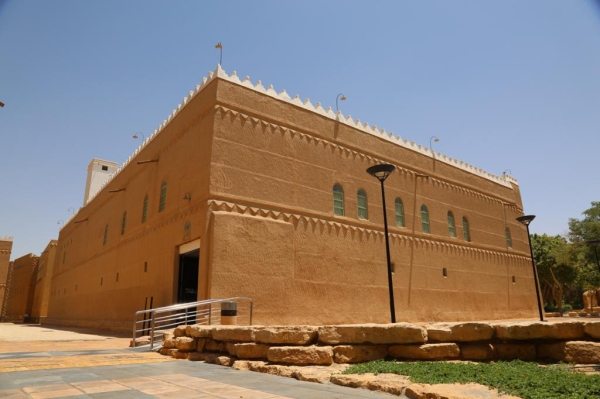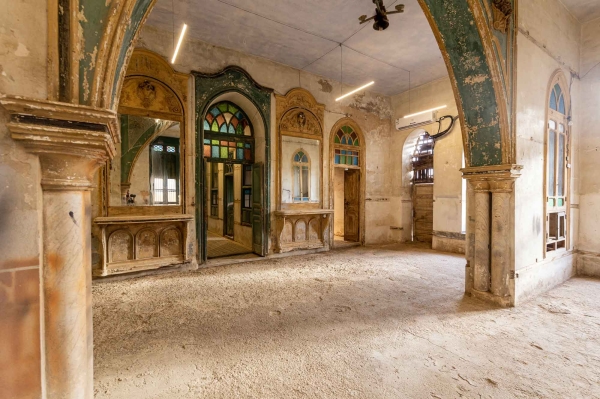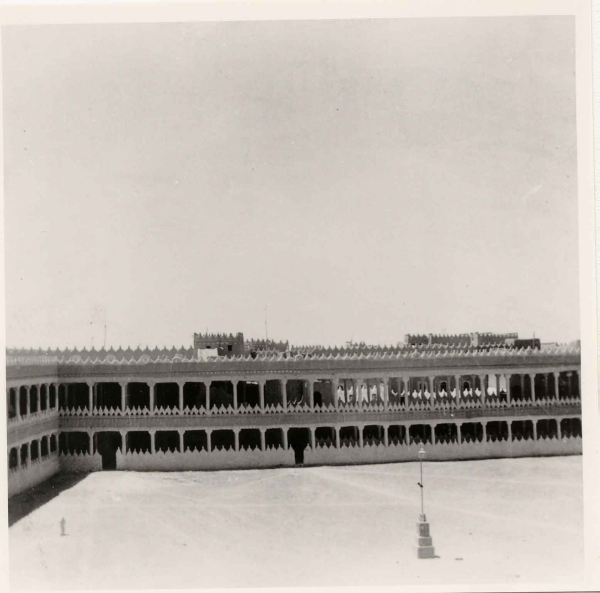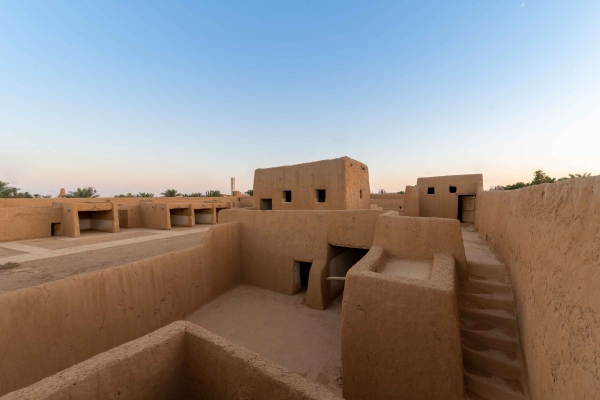




The palaces where the Founding King Abdulaziz Bin Abdulrahman Al Saud stayed hold significance due to the important events and occasions they witnessed, as well as their historical, heritage, and architectural value over time. Among the palaces inhabited by King Abdulaziz:
Khuzam Palace
It is a historical palace built by order of King Abdulaziz in the heart of Jeddah in 1928, after his residence between Nassif House and the Green Palace in Jeddah. Khuzam Palace was one of the first buildings to use cement and steel in the Kingdom of Saudi Arabia, and it was the site where the first and most important oil exploration agreement was signed.
Badi'ah Palace
It was built by order of King Abdulaziz in 1935, between Wadi Hanifah and Shuaib Umm Qasr in Riyadh City. It served as a venue for hosting visitors and private meetings.
Qubbah Palace
The historical palace, built by order of King Abdulaziz, is located in Qassim Province. Its construction was completed after several years due to building materials being brought from areas outside Qassim and carried on the backs of camels and pack animals. The palace's significance lies in its geographical location, serving as a link between five administrative provinces in the Kingdom.
A'ali Palace
The palace was built to be among the list of local ruling palaces in 1936, in Qaryat al-Ulya Governorate in Eastern Province. Its location was chosen due to the high traffic density in the area.
The historic King Abdulaziz Palace
The palace was built in Rafha Governorate in Northern Borders Province, using mud and adobe in its construction. It is a rectangular building with circular towers, covering an area of 4,320 m. It includes a water well, a mosque, a section for managing emirate affairs, and a designated area for horses.
Murabba Palace
King Abdulaziz and his family moved to Murabba Palace in 1938. In this palace, he received several Arab heads of state and issued key decisions such as the issuance of Saudi currency, the establishment of formal schools, and the creation of the railway. The palace was built in 1936 as a collection of palaces within one wall outside Riyadh, from which its name originated
Related quizzes
Related articles
